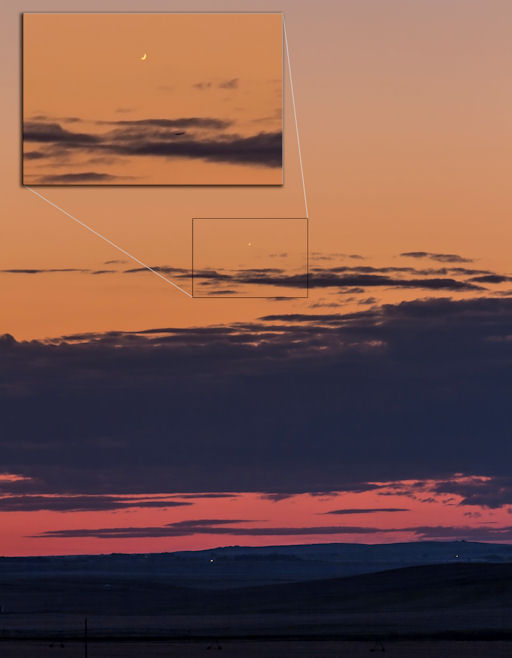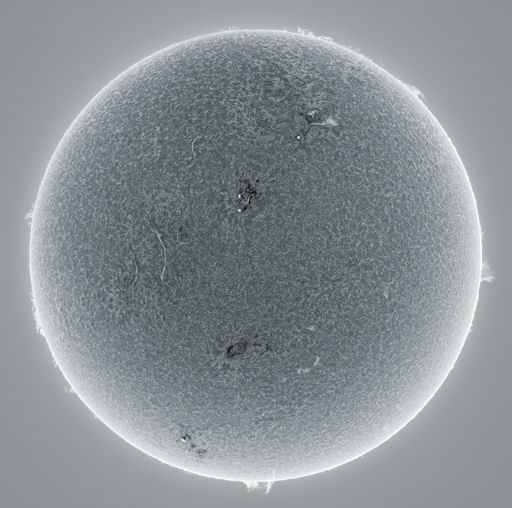It's a once in a lifetime event: the June 5th Transit of Venus across the sun. Watch the world wide webcast sponsored by the Coca-Cola Science Center and NASA. | | |
PUBLIC SERVICE ANNOUNCEMENT: Solar maximum is coming in 2013. How will space weather affect you? To answer that question, experts from around the world are gathering for the Space Weather Enterprise Forum (SWEF) on June 5, 2012, at the National Press Club in Washington, DC. To learn more and register, please visit the SWEF web site at http://www.nswp.gov/swef/swef_2012.html.
VENUS SIGHTINGS: Venus is approaching the sun for an historic transit on June 5th and 6th. Sky watchers accustomed to seeing the Goddess of Love shining brightly in the evening sky are having to look harder than usual as Venus plunges into the glare:

"It was a wonderful sight tonight, as I caught Venus in its last days before the transit, shining as a glistening crescent low in the evening twilight," says photographer Alan Dyer of Gleichen, Alberta, Canada. "Venus was visible to the unaided eye after sunset, but not for long. It set soon after the Sun. But for a short while it put on a beautiful show as a large crescent (large for a planet that is), easily resolvable in binoculars and stunning in a small telescope. One could almost make out, for brief moments, the sight of the backlit atmosphere going all the way around the disk. But I suspect it was more imagination at work than reality shining through."
"This was May 30, 6 days before the June 5 transit, with Venus 9.5° east of the sun. How far up to the Sun can we catch it, before it crosses the sun on Tuesday?" he wonders. The answer will be revealed in SpaceWeather's realtime photo gallery.
Space Weather Real Time Image Gallery
[Submit your photos] [NASA video: 2012 Transit of Venus]
CANVAS FOR A TRANSIT: In only 6 days, Venus will pass in front of the sun, marking the solar disk like the tip of a black-dipped paint brush drawn slowly across the stellar surface. If the transit is indeed like a painting, here is the canvas:

Alan Friedman took the picture from his backyard observatory in Buffalo, NY, on May 28th. "I was getting my ducks in a row for a trip west to observe the transit of Venus, practicing with a new camera and new laptop on the Memorial Day sun," he says. "There was lots of activity to see, including an ejection of plasma from active region 1492."
"What treats will the sun put out when Venus pays a visit next week?" Friedman wonders. Stay tuned.
more images: from Sergio Castillo of Inglewood, California; from Rijk-Jan Koppejan of Middelburg, the Netherlands; from Randy Shivak of Anthem, AZ; from Andre van der Hoeven of HI-Ambacht, the Netherlands; from Dennis Cumberland of Fort St. James B.C.

